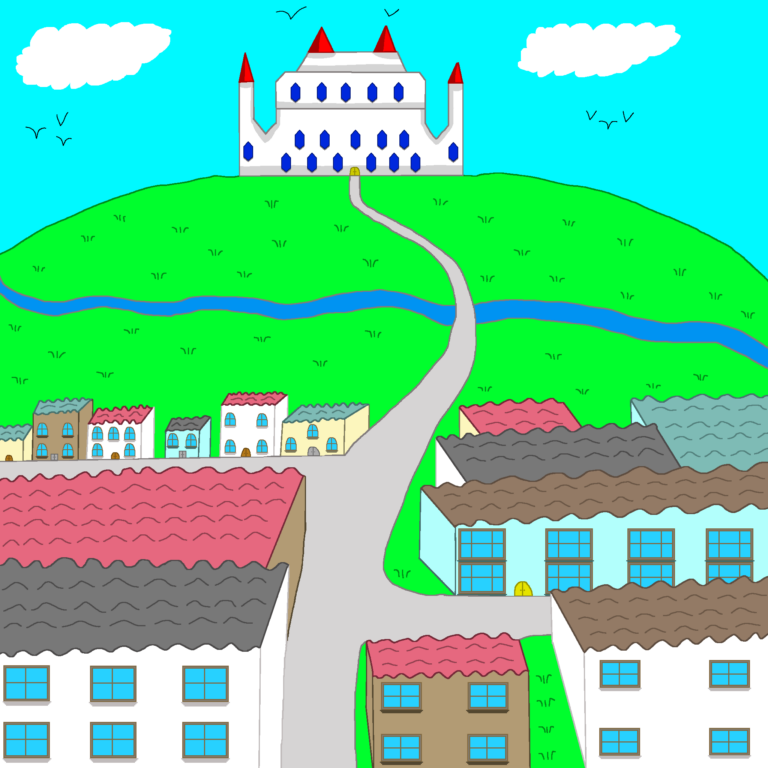Join US
Do you want to build the fantasy world you’ve always dreamed of?
Subscribe to receive notifications when a new post is out and for our monthly newsletter!
You can always unsubscribe anytime.


The story in a novel needs to captivate you not just from the beginning but all the way to the very end. While the beginning is important in getting people to read your book, the end might be more essential than the start. Thus, it’s vital that you finish the story in a way that is true to the spirit of the book and to the satisfaction of your readers.
Why should you care about ending the story that does both? The obvious answer is is that it’s the payoff for all the time your audience spent with your characters as they struggled to overcome the obstacles laid in their path. They want the time they spent to be worth it and ending the story on a beautiful — or bittersweet note depending on your perspective — makes them content and more likely to want to re-read it or pick up another one of your books.
While it’s imperative that you finish the story the right way, the lead-up to it is equally important. The climax of the plot is generally thought to be the beginning of the end which signifies that the intensity will gradually taper off as you approach the last few pages. Nevertheless, that shouldn’t dissuade you from creating a meaningful foundation that does its job.
In regard to ending the story, you only have one chance to stick the landing. That means you want to execute it the right way. Things like the pace of the story, the atmosphere and so on are considerations you want to take into account as you finish the story.
While you want to get the execution right, don’t forget to finish the story on a high note. You want to show your readers that all the turmoil your characters suffered was worth it. Show them why they made the choices they did.
This is article number thirty-nine in the series about writing a fantasy book. We have plenty more articles for you to peruse at your leisure which you can check out on our blog page!
Before ending the story, you want to start setting it up. This is an essential step, for how you set it up will dictate how you finish the story. You want to glide right into the ending in a way that feels natural to both your readers and your characters.
Laying the groundwork begins with the climax. It’s where all the major plot-lines converge into one moment that fundamentally changes everything which is usually accompanied by a high degree of intensity. The climax occurs towards the end, several chapters beforehand.

So how do you go about ending the story when you start with the climax? One thing to keep in mind is that afterwards, the intensity decreases the further you go from the climax as your characters deal with the fallout. You want to gradually deescalate things as they come to grips with whether they won or lost. Think of it like a slope where the climax is the highest point and the actual ending is the lowest.
This part of the book is also where lingering major plot-lines are resolved. Whatever plot-lines that weren’t resolved during the climax, it’s time to wrap them up so that your characters can enter the ending with everything all settled. Don’t forget to close them out in a way that is natural for the characters involved in them.
One thing you need to do in this area is think about where you want your characters to be when you finish the story. Use this time to move them towards where they’ll be in their final scene in the novel. Have them do what they need to do as they head towards their last appearance.
Now that you’ve laid a solid foundation for ending the story, it’s time to focus on the actual execution. There’s a number of considerations you need to think about when writing the ending. They will help enhance the plot and make it easier for you to bring the story to a satisfying close.
The first thing to take into account when ending the story is its pace. Having the right pace can make the difference between a riveting ending and one that feels disjointed. In the ending, the pace is slow since the intensity from the climax is all but evaporated by then, giving you more time to write poignant farewells for your characters with little to no tension lurking behind them.

Another cornerstone of a great ending is the atmosphere. Throughout the story, the ambience sets the mood and it still holds true for the ending. In the ending, the atmosphere should have a sense of finality that matches the heart of the characters as they look forward to the next phase of their lives.
Using the right setting can set the right mood for ending the story. This will be the last time your audience sees your characters — unless you intend to do a sequel — so having a setting that highlights how far they’ve come or what they fought for is a superb way to send them off. You can use settings like sailing the high seas with the sun setting or a castle balcony with the rising dawn to illustrate that your characters have either found peace or are chasing their dreams.
Don’t understate the importance of the mood of your characters as you finish the story. They’ve successfully accomplished what they had to do during the plot and the ending is where they begin to embark on the next stage of their lives. They should be happy and eager to look forward to a new chapter but at the same time, there’s a bittersweetness to it since they have to leave the people they’ve gotten to know throughout the story.
Many endings in the fantasy genre are either happy or tinged with bittersweetness. Regardless of how it ends, they have a common denominator: they end in a way that satisfies the plot. Leaving the story on a high note makes your audience feel like everything they read was worth it.
The last several scenes of the plot should depict everything your characters worked for. They could be to make the world a better place, a brighter future for their children, or something else. These scenes ought to show your readers why your characters fought with everything they had.

Give the characters a sense of finality as they close out a chapter in their lives. They suffered much as they experienced both triumphs and setbacks in the story and by the end, they were better than they were at the beginning which is one of several character arcs. The ending show reflect how much they’ve grown as they look back at the chapter they’re about to close before moving onto the next phase.
Another way to finish the story here is to indicate that the tension the characters and the world felt is gone now that the villain has been defeated. You can use bright, clear weather or show that the effects the villain had on the land like poison is gone, giving the world a new lease on life. The tension gave way to a sense of renewed hope.
Have the final few scenes — or the entirety of the last chapter if it’s set after the climax — feature the currents of change. In fantasy, the ending is also known as a time of monumental change as one era draws to a close while the dawn of a new one rises. “The Lord of the Rings” encapsulates this perfectly as the Third Age comes to an end shortly after Sauron’s defeat and Aragorn being crowned King of Gondor. The world begins to rebuild and look to the horizon with a changing of the guard as a new generation of leaders rise to take charge.
How you finish the story will affect how your readers feel about the overall plot. If you end it on a bad note, they’ll be disgruntled and less willing to want to re-read it again or pick up another one of your books. Ending it on a high note, they’ll love it and feel like it was a great story, one they’ll come back to sometime again!
Before you start working on ending the story, it’s crucial you devote time to setting it up. After doing the climax, you have to bring the intensity down as you move towards the final scenes. Wrap up all remaining unresolved plot-lines as you pivot towards the ending.
When working on the ending itself, you have only one chance to make it count. That means take as much time as you need to make an ending that satisfies both the plot and your readers. The execution matters just as much as the actual ending itself!
It’s essential that the ending is done in a way that does the story justice. You want to show the audience that it was all worth it to see the characters they’ve grown to love (or hate!) get the ending that they deserve. Leaving it on a high note gives them a sense of contentment as they get to see them begin a new chapter in their lives.
Will you finish the story in a way that is both poignant and moving while remaining true to the spirit of the plot?
Let me know what you think in the comments below. (Note: this is an account-exclusive feature).
If you don’t have one, you can register here. It only takes a few moments of your time!
Liked this article and want to subscribe? All you have to do is fill out the form below and that’s it!
Thanks for reading this and until the next time,
Sunfire
Subscribing means you receive:
You can always unsubscribe anytime.
Do you want to build the fantasy world you’ve always dreamed of?
Subscribe to receive notifications when a new post is out and for our monthly newsletter!
You can always unsubscribe anytime.